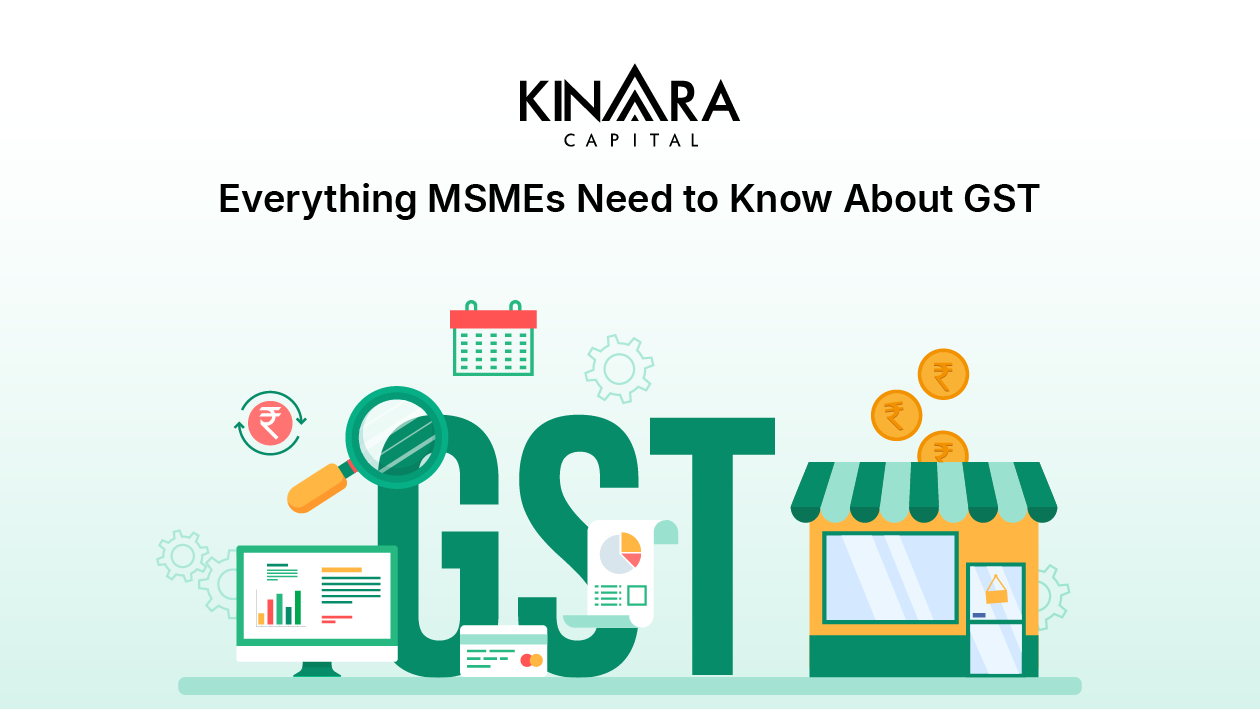
Regarded as one of the biggest tax reforms in our country, the Goods and Services Tax (GST) regime being rolled out marked a significant transformation in the indirect taxation system. It has made understanding the framework easier by bringing all indirect taxes under a single category.
The GST council works consistently towards bringing about healthy changes in GST rates and several other tax parameters to ensure benefits to businesses and consumers across the country. As easy as GST is for consumers, small business owners can find it challenging to understand its intricacies completely.
In this article, we’ll explore the different types of GST rates and how they can benefit small business owners.
Here is a detailed look at the different types of GST:
This GST regime is applicable only on transactions that occur within a state. The SGST Act controls such exchanges, and the revenue generated is collected exclusively by the state government.
This GST regime is applicable on all intrastate transactions and is governed by the CGST Act. The revenue generated through CGST is collected solely by the central government.
This is a tax that is applicable on all interstate transactions and is governed by the IGST Act. The tax-collecting body for IGST is the central government. The proceeds are then distributed among the concerned states.
This tax acts as the counterpart of SGST. The only difference is that the tax is levied on transactions that happen in the union territories of India like Pondicherry, Andaman and Nicobar Islands, Daman and Diu, Lakshadweep Islands, Chandigarh, and Dadra and Nagar Haveli.
The GST council determines the GST rates periodically. While the GST rates are typically low for essential goods, luxury products are more heavily taxed. The GST rates are segregated into four main slabs: tax of 5%; 12%, 18%; and 28%. Aside from these, there is a category of essentials like vegetables and milk, as well as other common household goods that are exempt from GST.
Since its inception, GST rates of various products and services have been revised several times by the GST council. Here is a brief look at some of the everyday products that are included in the various GST rate slabs:
While GST for small business offers a range of benefits, it also has its share of challenges. Here’s a look at some of the challenges in challenges in GST filing that MSMEs can face:
GST registration for MSME businesses is an important step to formalization and compliance. The government has simplified the process of small business GST registration to make it accessible to MSMEs. Here are the steps you need to follow to apply for GST registration:
Once you have completed the process, a GST officer will verify the information and you will receive your unique GST identification number (GSTIN) to file your GST.
Tax compliance can become a burden for MSMEs, since they operate on limited liquidity and resources. Delays in receiving GST refunds can hold up funds, interrupting their day-to-day operations. In such scenarios, opting for a working capital loan can help them tide over. Kinara Capital is an RBI-registered fintech that provides unsecured business loans to support the growth of small businesses in the MSME sector. Kinara is the best choice for MSMEs seeking a loan to ease operations while completing tax liabilities in a timely manner, because the company provides fast and easy access to capital without hassles.
Kinara’s small business loan can be availed of through three easy steps by downloading their myKinara App. MSMEs can start their journey towards getting a collateral-free business loan by taking a 1-minute eligibility check, followed by an end-to-end digital process. This is followed by fast and unbiased loan decisioning through the company’s proprietary AI/ML-based models.
1. Is GST good for MSMEs?
The GST roll-out has simplified the tax structure, reduced costs, and improved the ease of doing business for MSMEs. Overall it has been beneficial for MSMEs, but it does pose some challenges.
2. Can MSMEs complete the GST registration process online?
Yes, MSMEs can complete the GST registration process entirely online through the government’s official GST portal.
3. What is the impact of GST on MSMEs?
GST has simplified goods and services taxes by bringing them all under one regime, and reduced logistics costs for MSMEs. However, it has also added to compliance burdens for small businesses, and some might find the process difficult to navigate.
4. Is GST required for small businesses?
Yes, GST is required for small businesses with annual turnovers above Rs. 1.5 crores. Those below the threshold can opt for the Composition Scheme or be exempt.
5. Who is not eligible for GST registration?
Businesses involved in the supply of goods that are not liable for GST, like petroleum products, stamps, and currency, are not required to register for GST.
